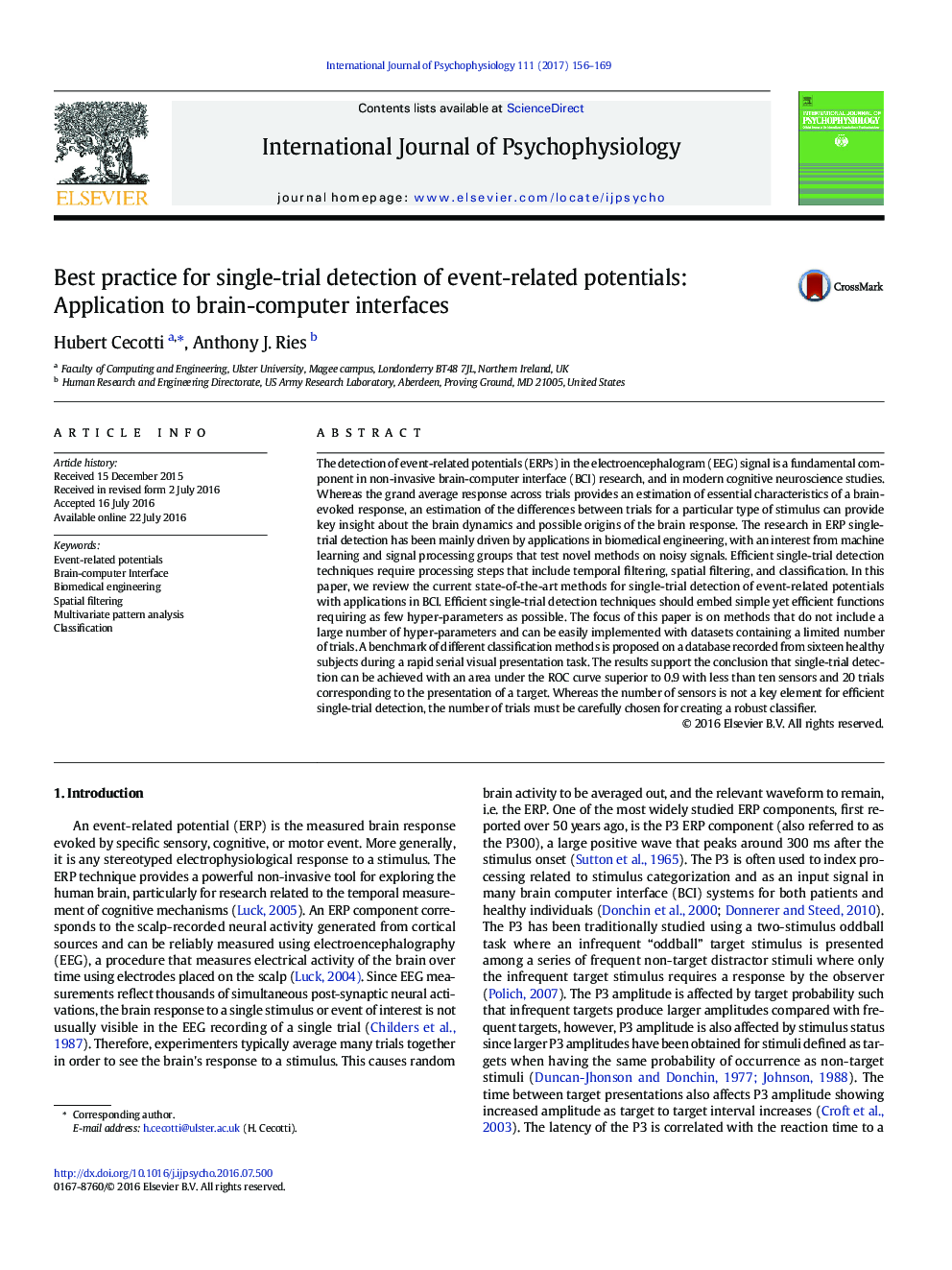| کد مقاله | کد نشریه | سال انتشار | مقاله انگلیسی | نسخه تمام متن |
|---|---|---|---|---|
| 5042370 | 1474385 | 2017 | 14 صفحه PDF | دانلود رایگان |
- A guideline for single-trial detection of event-related potentials
- A benchmark of different methods for single-trial detection
- A performance analysis with sensor selection during a rapid serial visual presentation task
The detection of event-related potentials (ERPs) in the electroencephalogram (EEG) signal is a fundamental component in non-invasive brain-computer interface (BCI) research, and in modern cognitive neuroscience studies. Whereas the grand average response across trials provides an estimation of essential characteristics of a brain-evoked response, an estimation of the differences between trials for a particular type of stimulus can provide key insight about the brain dynamics and possible origins of the brain response. The research in ERP single-trial detection has been mainly driven by applications in biomedical engineering, with an interest from machine learning and signal processing groups that test novel methods on noisy signals. Efficient single-trial detection techniques require processing steps that include temporal filtering, spatial filtering, and classification. In this paper, we review the current state-of-the-art methods for single-trial detection of event-related potentials with applications in BCI. Efficient single-trial detection techniques should embed simple yet efficient functions requiring as few hyper-parameters as possible. The focus of this paper is on methods that do not include a large number of hyper-parameters and can be easily implemented with datasets containing a limited number of trials. A benchmark of different classification methods is proposed on a database recorded from sixteen healthy subjects during a rapid serial visual presentation task. The results support the conclusion that single-trial detection can be achieved with an area under the ROC curve superior to 0.9 with less than ten sensors and 20 trials corresponding to the presentation of a target. Whereas the number of sensors is not a key element for efficient single-trial detection, the number of trials must be carefully chosen for creating a robust classifier.
Journal: International Journal of Psychophysiology - Volume 111, January 2017, Pages 156-169
